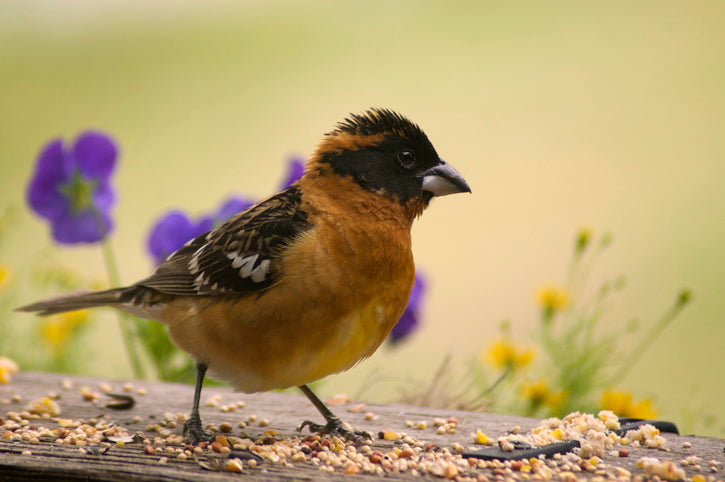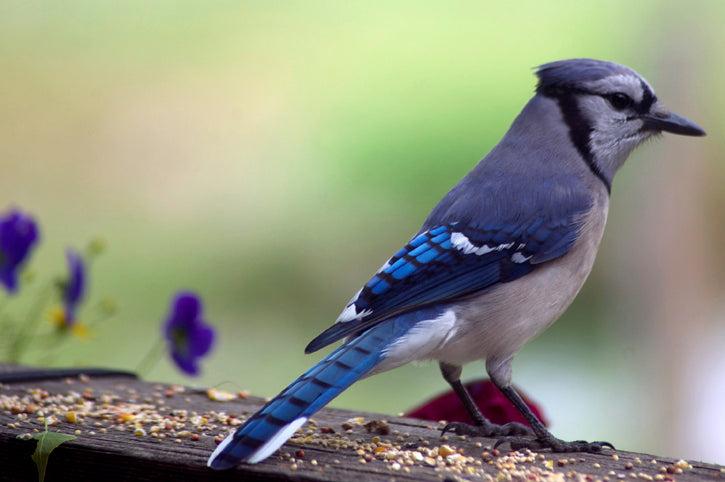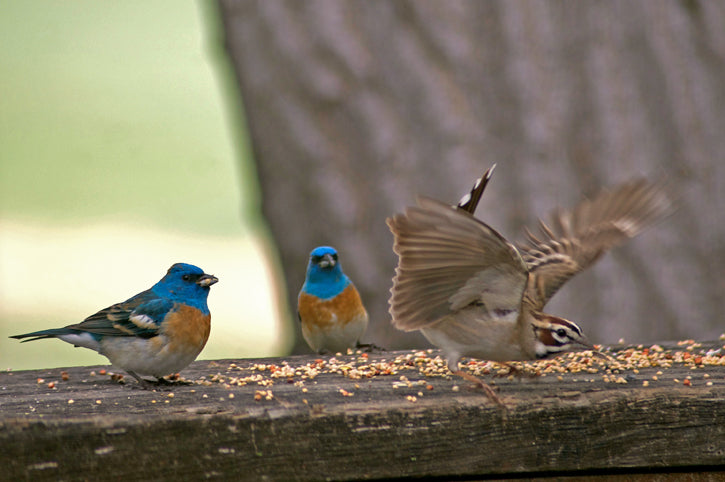Bird watching is a favorite pastime on the ranch and brings all of us so much joy.

The old cottonwoods that canopy the house are perfect for tree nesters and cavity dwellers.

These sites are carefully selected and are often out of sight. To see our feathered friends more clearly, we strategically place a couple of bird feeders off the deck of the ranch house for prime viewing.

Although a few bird species stay through the winter, most show up in the spring, raise their families, then bunch up in the fall and head south.
In addition to the fluttering above, there is a lot of action happening in the grasslands. Many of the species are shore birds, such as the Long Billed Curlew.

The ground-nesting birds are more challenging to view, as their plumage is subtler, like the prairie itself.
But like the passerines, many of these ground-nesting birds come to the prairie to breed and raise their young, with a few being year-long residents, like the Sharp Tailed Grouse.

Where birds live, and the habitat they need for their survival, is of great concern.
Each species seeks its specific niche within the prairie ecosystem. The diversity of the prairie grasses, or open arid areas, dotted with prairie playas, is the required habitat for many of these species.
There are currently over 200 species of ground-nesting birds on the Great Plains prairies. These grassland birds have been on the decline since the mid 1800’s.
When the European settlers arrived, an estimated 360 million acres of tall-grass, short-grass and mixed-grass prairies filled the middle part of our country. Today, about 70 million acres remain. Although there are many contributors to their decline, the loss of grassland habitat due to prairie plow up and other exploitation is the largest factor.
One of the most staggering statistics is the Eastern Meadowlark with an 89% decline over the last forty years. The Western Meadow Lark (pictured below) isn't trailing too far behind with a 40% decline over the same time period.
Their songs are the bugle call "that spring has arrived." To think of it being silenced is heart wrenching.
There is no doubt that preserving the breeding ground habitat for prairie ground-nesting birds is essential to their survival. So, if you see a lost or confused bird looking for good place to raise its family, send them our way, we've got room... as long as the buffalo keep roaming on.
Photos taken by Jill O'Brien on the Cheyenne River Ranch, in western SD.

23 comments
Beautiful – birds and wherever they may live, will always be on my top ten! I have always loved birds. Thank you for sharing this and for the work you are doing.
Love the pictures! (BTW- I think Killdeer is spelled as one word!) Thanks for all you do!
should we lose even just one species mankind will feel it. the old ones say that if the animals and winged ones left we would die of loneliness of the spirit. not to mention the pollination of plants.
We love your photos (and products); probably going to American Prairie Reserve in the fall. Hope to see these and other birds there.
Very, very interesting article. When flying over the midsection of our country, I’ve often seen these playas. I thought they were ponds for farming, etc. Now I have a greater understanding of these necessary areas! I also did a quick research on Playa Wetlands and discovered this very interesting site.
http://integrativebiology.okstate.edu/index.php/people/57-playa-wetlands-in-the-great-plains
This site has lots of information on Playa Wetlands and it along with your blog sparked an interest in this critical habitat.
Thank You!
Tim Harris
So glad you’re providing this much needed space for our feathered friends. Makes me want to visit. Keep up the blog and pics if it works for you regarding this important,beautiful work. Gives me a glimpse of what life must have been like in the past—- a little.
Loved this. Thank you. r
Your work, your words and your photos are heartwarming, Jill. Excellent. Keep on.